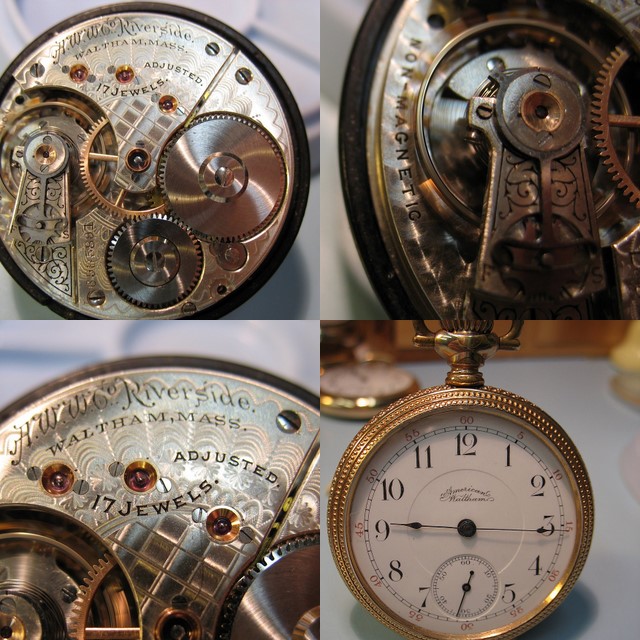
| WWT Shows | CLICK TO: Join and Support Internet Horology Club 185™ | IHC185™ Forums |

|
• Check Out Our... • • TWO Book Offer! • |
Welcome Aboard IHC185™  Internet Horology Club 185
Internet Horology Club 185  IHC185™ Discussion Site Main Page
IHC185™ Discussion Site Main Page  Horological Discussions, Questions and Answers
Horological Discussions, Questions and Answers  Pocket Watch Discussions
Pocket Watch Discussions  Elgin & Elvinar Hairsprings
Elgin & Elvinar Hairsprings
 Internet Horology Club 185
Internet Horology Club 185  IHC185™ Discussion Site Main Page
IHC185™ Discussion Site Main Page  Horological Discussions, Questions and Answers
Horological Discussions, Questions and Answers  Pocket Watch Discussions
Pocket Watch Discussions  Elgin & Elvinar Hairsprings
Elgin & Elvinar HairspringsGo  | New Topic  | Find-Or-Search  | Notify  | Tools  | Reply to Post  |  |
| IHC Life Member Site Moderator |
I was wondering when Elgin switched to the elvinar hairspring? I see so much mentioned about Hamilton & Illinois when they made the switch but I never see or hear anything about Elgin's. I searched the site & came up with nothing, that is if I spelt everything right. Do Elvinar hairsprings increase the value of the watch like they seem to do for the other brands. Look forward to the answers. Tom | ||
|
| IHC Life Member |
Elgin made non-magnetic "Paillard's Patent" watches in the early 20th century, and then made some Invar Balance 16s watches in the 20's and 30's, and finally in the mid-late thirties made most of their higher grade movements with Elinvar type balance springs. This is what wickipedia says; "Elinvar is a nickel steel alloy with a modulus of elasticity which does not change much with temperature changes. The name is a contraction of the French Elasticité invariable. It was invented around the 1920s by Charles Édouard Guillaume, a Swiss physicist who also invented Invar, another alloy of nickel and iron, which has very low thermal expansion. Guillaume won the 1920 Nobel Prize in Physics for these discoveries, which indicates how important these alloys were for scientific instruments. The largest use of Elinvar was in balance springs for mechanical watches and chronometers. A major cause of inaccuracy in watches and clocks was that ordinary steels used in springs lost elasticity slightly as the temperature increased, so the balance wheel would oscillate more slowly back and forth, and the clock would lose time. Chronometers and precision watches required complex temperature-compensated balance wheels for accurate timekeeping. Springs made of Elinvar, and other low temperature coefficient alloys such as Nivarox that followed, were not affected by temperature, so they made the temperature-compensated balance wheel obsolete. Elinvar consists of 59% iron, 36% nickel, and 5% chromium. It is almost nonmagnetic and corrosion resistant." Then there's my 1893 Waltham with a non-magnetic Balance spring . . .  | |||
|
| IHC Life Member Site Moderator |
Thanks David, I notice I was had searched under the wrong spelling as nornal for me. Tom | |||
|
| Powered by Social Strata |
| Your request is being processed... |
|
©2002-2025 Internet Horology Club 185™ - Lindell V. Riddle President - All Rights Reserved Worldwide

